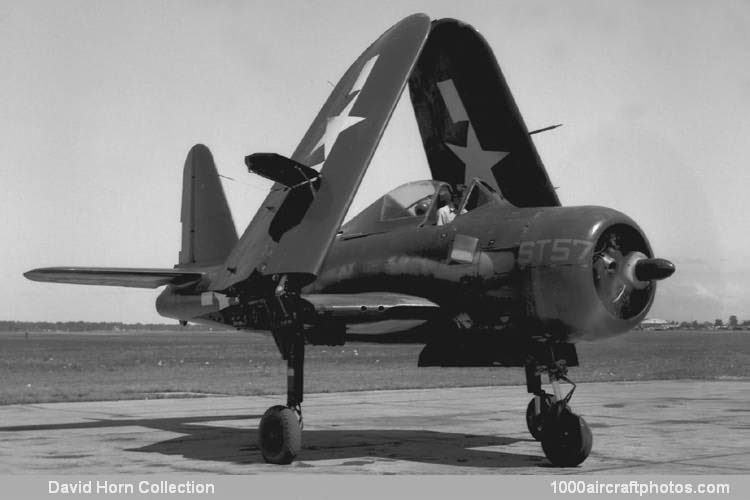A low-wing, cantilever monoplane of classic design, the XFR-1 was the first carrier aircraft designed from the outset to use a laminar-flow airfoil and the first USN aircraft to have an entirely flush-riveted exterior and metal-skinned movable control surfaces. Power was provided by a 1,350 hp Wright R-1820-72W Cyclone nine-cylinder air-cooled radial engine and, in the rear fuselage, a 1,600 lb (726 kg) st General Electric 1-16 (later redesignated J31) turbojet.
Proposed armament consisted of four 0.5 in (12.7 mm) machine guns with provision for a 1,000 lb (454 kg) bomb under port inboard wing panel. Other features were hydraulically-folding outer wings and a tricycle landing gear. A contract for 100 production FR-1s was placed on December 2, 1943, the first of three XFR-1s (BuNos. 48232 to 48234) flying seven months later, on June 25, 1944, with only the piston engine installed. The turbojet was added a few days later.
Initial flight tests led to a major redesign of the original tail, see photo 11876, by enlargement of the vertical tail and lowering of the horizontal tail, see photo 1912. On January 31, 1945, by which time a number of series FR-1s had been completed and were under test, a contract was placed for 600 FR-2s which were to differ in having the R-1820-74W engine of 1,500 hp with water injection. In the event, neither the FR-2 nor the XFR-3 was to be built, the latter being intended to mate the 2,000 lb (907kg) st General Electric 1-20 turbojet with the -74W piston engine.
The XFR-4, on the other hand, entered flight test in November 1944. Utilizing the nineteenth FR-1 production airframe, this replaced the J31-GE-3 turbojet with a 3,400 lb (1,542 kg) Westinghouse J34-WE-22, discarded the wing root intakes of the FR -1 in favor of flush inlets in the sides of the forward fuselage, and had the aft fuselage extended by 8 in (20 cm). It was found, however, that the thrust of the J34 was too great to permit efficient use of both engines and the XFR-4 program was discontinued accordingly.
Deliveries of the FR-1 to the USN began in March 1945, the 34 FR-1s remaining to be delivered were cancelled, together with all 600 FR-2s. Only seventeen of the 66 FR-1s built saw squadron usage, the remainder being assigned for various test programs, the fifteenth becoming the XF2R-1.
The pictured aircraft was one of six FR-1s (BuNos. 39650, 39656, 39657, 39659, 39660, 39665) used by NASA at the Ames Research Center, Moffett Field, California, between February 17, 1945 and June 1, 1947, subsequently it became an instructional airframe at a technical school. In 1967 it was obtained by Ed Maloney for display at his Air Museum at Ontario, California. The aircraft moved with the collection to the renamed Planes of Fame Air Museum at Chino in 1972. Recently the aircraft was put back on display after many years of restoration."
Span: 40 ft 0 in (12.19 m)
Length: 32 ft 4 in (9.85 m)
Height: 13 ft 11 in (4.24 m)
Wing area: 275 sq.ft (25.54 sq.m)
Weight empty: 7,689 lb (3,488 kg)
Loaded weight: 11,652 lb (5,285 kg)
Max speed: 320 mph (515 kmh) (Cyclone only)
Max speed: 399 mph (642 kmh) at sea level (both engines)
Max speed: 426 mph (686 kmh) at 18,100 ft (5,515 m) (both engines)
Initial climb (both engines): 4,800 ft (1,463 m)/min
Climb: to 20,000 ft (6,095 m) 5 min 36 sec
Range: 1,030 mls (1,658 km)
